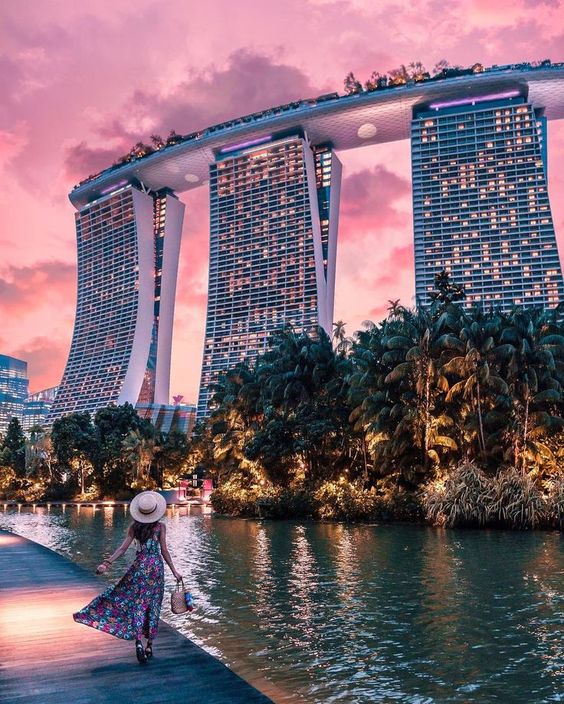Planning a trip to Singapore for the first time can be both exciting and a bit daunting. This vibrant city-state is known for its stunning skyline, mouth-watering cuisine, and ultra-modern infrastructure. However, it also comes with its own set of unique rules, customs, and tips that can make or break your travel experience. Whether you’re navigating its efficient public transportation or savoring dishes at local hawker centers, knowing what to expect will ensure that your visit is both enjoyable and hassle-free. 14 things to know when Traveling to Singapore
Singapore has some of the strictest drug laws in the world. It’s vital to understand and respect these laws to avoid severe consequences during your visit.
Page Contents
ToggleThe Consequences
Singapore imposes severe penalties for drug offenses, including imprisonment, caning, and even the death penalty for drug trafficking. The country operates under the assumption that you’re guilty until proven innocent, making it incredibly difficult to exonerate yourself if accused. Fines can reach up to $20,000, and imprisonment can last up to ten years or more. This strict enforcement helps maintain Singapore’s reputation as a safe and orderly country.
Examples of Prohibited Substances
The list of banned substances in Singapore is extensive. It includes common recreational drugs like marijuana, cocaine, heroin, and ecstasy, as well as lesser-known ones like opium and “ice” (a term for crystal methamphetamine). Even ketamine, often known as “special K,” is strictly forbidden. Under no circumstances should you possess, consume, or traffic any of these substances while in Singapore.
Airport Bag Safety Tips

While Singapore is generally very safe, it’s essential to take extra precautions at the airport to safeguard your belongings.
Theft Prevention
Ensure your bags are always within sight and securely fastened. Theft rates are low, but it’s better to be safe than sorry. Using locks and keeping an eye on your items helps prevent any opportunistic thefts.
Avoiding Drug Planting
Singaporeans often hold their bags closely at the airport to prevent anyone from planting illegal substances in them. Always keep your bags in sight and be cautious of anyone attempting to tamper with your luggage, as this could inadvertently implicate you in drug trafficking.
Chewing Gum Regulations
One interesting quirk about Singapore is its ban on chewing gum, which has been in place since the early ’90s.
The Ban on Chewing Gum
Chewing gum has been banned in Singapore since 1992 to maintain public cleanliness and protect the city’s extensive public transportation network. While chewing gum itself is not illegal, the sale and importation of gum are strictly prohibited.
Penalties for Violations
Violating these gum regulations can result in hefty fines of up to $100,000 or even a two-year prison sentence for repeat offenders. It’s best to leave your chewing gum at home to avoid any trouble.
Weather-Appropriate Clothing
The climate in Singapore is consistently hot and humid, making it crucial to dress appropriately.

Ideal Fabrics to Wear
Light, breathable fabrics such as cotton and linen are your best friends. These materials help keep you cool in the high heat and humidity that Singapore experiences year-round. Shorts, tank tops, and comfortable shoes are also essential attire.
Dealing with Air Conditioning
While it’s hot outside, indoor spaces like malls, hotels, and public transportation are heavily air-conditioned. Packing a light sweater or shawl can help you stay warm when moving between the hot outdoors and cool interiors.

Sun Protection Essentials
The sun in Singapore can be brutal, so taking steps to protect your skin is essential.
Recommended Sun Protection Items
Always use sunscreen with a high SPF, wear a hat, and bring along a pair of UV-protective sunglasses. These items are crucial, especially if you plan on spending time outdoors exploring Singapore’s many attractions.
Sun Intensity and Skin Care
The UV index in Singapore is very high due to its proximity to the equator. Even with sunscreen, it’s a good idea to seek shade during peak sun hours from 11 AM to 3 PM to minimize skin exposure and the risk of sunburn or heat exhaustion.

Rain Preparedness
Given Singapore’s tropical climate, rain can come quickly and without much warning.
Monsoon Season Insights
Singapore experiences two primary monsoon seasons: the Northeast Monsoon (December to March) and the Southwest Monsoon (June to September). While heavy rain can occur at any time, these periods are particularly prone to sudden downpours.
Essential Rain Gear

An umbrella or compact raincoat is indispensable for navigating rainy weather. It’s better to be prepared for rain, even on days that start off sunny, to avoid getting caught in a sudden downpour.
Eating at Local Food Centers
One of the best ways to experience Singapore is through its food, particularly at hawker centers.
What Are Hawker Centers?
Hawker centers are open-air complexes housing various food stalls selling a variety of inexpensive, local dishes. They are incredibly popular and frequently visited by locals, offering everything from Hainanese chicken rice to chili crab.
Benefits of Eating Locally
Eating at hawker centers allows you to enjoy high-quality food at a fraction of the price you’d pay at a restaurant. Many of these stalls even boast Michelin stars, making them both affordable and delicious options for dining.

Using Public Transportation
Singapore’s public transportation system is both efficient and cost-effective, making it the best way to get around the city.
Advantages of Public Transit
Public transportation in Singapore is fast, reliable, and covers almost the entire city-state. The MRT (Mass Rapid Transit) system and buses are clean, punctual, and easy to navigate, making them preferable over more expensive taxis.
Singapore Tourist Pass

The Singapore Tourist Pass offers unlimited travel on the MRT and buses for a fixed period, with one-day, two-day, and three-day options available. This pass can save you money and hassle, allowing you to freely explore the city without worrying about transportation costs.
Healthcare Services
Singapore provides excellent healthcare services, which can be accessed easily even during a short visit.
Accessing Medical Clinics
Should you feel unwell during your stay, walk-in medical clinics are widespread. No appointment is necessary, and you’ll usually be seen within 15 minutes, making it easy to receive prompt medical care.
Cost and Quality of Care
Singapore boasts high-quality healthcare at reasonable prices. A visit to a clinic, including medication, typically costs around $45 USD. This affordability and the speed of service can make a significant difference if you’re unfortunate enough to fall ill while traveling.
Reserving Tables and Carrying Tissues
Dining at hawker centers involves some unique local customs, one of which is the “chope” system.
Understanding the “Chope” System
At crowded hawker centers, finding a seat can be challenging. Locals use packets of tissues to ‘chope’ (reserve) tables. If you see a table with a packet of tissues on it, that means someone has claimed it and will return shortly.
Practical Uses of Tissues
Apart from reserving tables, carrying tissues can also be practical in case you need them at a hawker center where napkins may not be provided. It’s a small but useful item to have on hand.
Cash Versus Card Payments
While Singapore is modern and generally card-friendly, there are still instances where cash is necessary.
Where Cash is Needed
Most stalls at hawker centers do not accept credit cards, so having some Singaporean dollars on hand is essential if you plan to experience local dining.
Credit Card Acceptability
Credit cards are widely accepted at malls, hotels, and major attractions. However, having cash ensures you won’t miss out on smaller, cash-only vendors and services.
Tipping Etiquette
Tipping culture varies around the world, and Singapore has its own practices.
When Tips Are Not Expected
Tipping is generally not expected in Singapore and often not practiced, especially at hawker centers.

How and When to Tip
If you do feel inclined to tip, do so directly and discreetly, preferably handing it to the stall owner or server. However, be mindful that substantial tips might be returned as it’s not a common practice.
Night Safety
Singapore is renowned for its safety, making it comfortable to explore at any time, even late at night.
Why Singapore is Safe at Night
Strict laws and severe penalties for crimes like theft and violence contribute to a sense of security. This results in a low crime rate, allowing both locals and tourists to feel safe when walking around at night.
Getting Help When Needed
Most Singaporeans speak English and are friendly and approachable. Should you get lost or need assistance, don’t hesitate to ask for help. Additionally, ride-sharing services like Grab are readily available if you prefer to get back to your accommodation safely.
Exploring Singapore Beyond the City
Singapore is composed of multiple islands, offering more attractions than just the cityscape.
Sentosa Island
Sentosa Island is a well-known tourist destination featuring a variety of attractions, including Universal Studios, an aquarium, zip lines, and beautiful sandy beaches. It’s easily accessible from Singapore via the Sentosa Express.
Pulau Ubin
For a more tranquil escape, Pulau Ubin offers an unspoiled natural environment. This largely rural island can be explored on foot or by bike and provides a glimpse into Singapore’s past with its rustic charm and abundant wildlife.
Ready for an Unforgettable Adventure?
Armed with these essential tips, you’re now ready to experience Singapore like a seasoned traveler. From savoring local delicacies at bustling hawker centers to exploring the hidden gems beyond the city’s gleaming skyscrapers, your journey will be filled with memorable moments. Embrace the unique blend of tradition and modernity, and let Singapore’s vibrant culture and stunning landscapes captivate you. Safe travels, and may your first trip to Singapore be nothing short of spectacular!
Read more: Top Instagram-worthy Spots in Singapore

